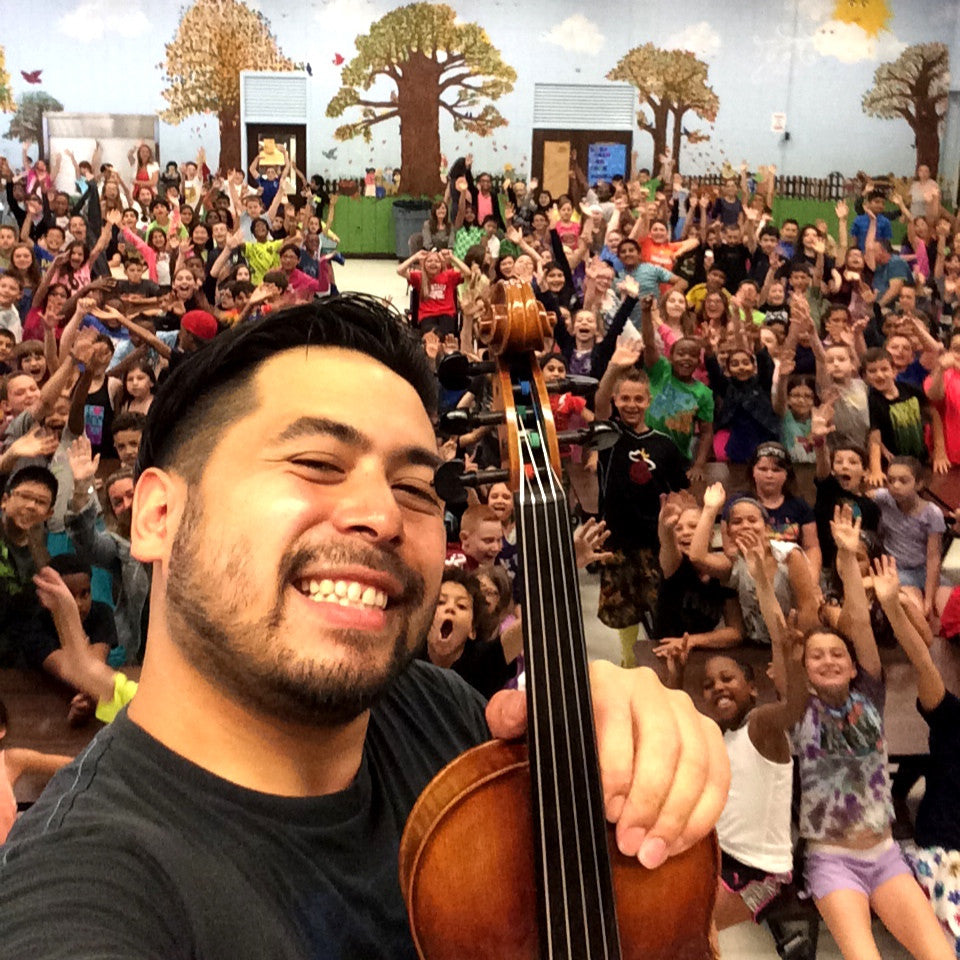The clock strikes 9:00 AM. First period orchestra has just begun. Some eyes are half opened, with heads in hands and elbows on knees, instruments are being tuned, bows tightened, and I’m standing at the front of the room, ready to present my electric violin workshop to a room full of string players. I begin playing the latest song from Top 40 singer Ellie Goulding and see a change in the faces of these students; eyes widen, the corners of their mouths turn upwards, and there is a noticeable elevation of the room’s energy. Something about hearing “their music” on “their instrument” is invigorating, eye-opening, and offers a new way of approaching what they’ve already spent several years mastering.

Going into schools and working with orchestra students has shown me an array of things. Each and every school is filled with musicians of all levels who share the experience of having chosen a stringed instrument. This decision is one that allows me to see eye to eye with them, having made that decision myself years ago and stuck with it. In order for many students to stay inspired and continue to play their instrument through high school and on into college, they need to be made aware that they are capable of playing the music they are taught along with the music they love to listen to.
It’s empowering to have control of the kind of music you can learn and play. Growing up playing violin, it became commonplace to work exclusively with the music I was given by my teacher. It was the way things worked, a logical progression of repertoire that would enhance my skill set. However, it’s understandable that many people also want to play music outside of the “classical” genre that encompasses most of what they learn in a private lesson. This leads to people quitting violin for guitar, drums, electric bass, etc. They abandon an instrument that they’ve spent years playing solely based on the fact that they can’t play the music they want to on it.

After finishing my performance and showing them the process behind “looping,” in which I play all of the parts and record them live on my “Loop Station” pedal, something clicks among the students. I explain how I learn the songs by ear and how they can do the same by singing different parts back first and translating the notes they sing to their instrument by matching pitch. Some brave souls come up and try their hand at looping afterwards and, after creating a tune of their own, could light up the whole room with their smile.
This is the power of music. This is why many of us connect with our instruments the way we do. We want to have our choice and our chance to play the music we love to listen to. Sometimes we just need to be told that this is not only possible, but also acceptable and encouraged.




Leave a comment